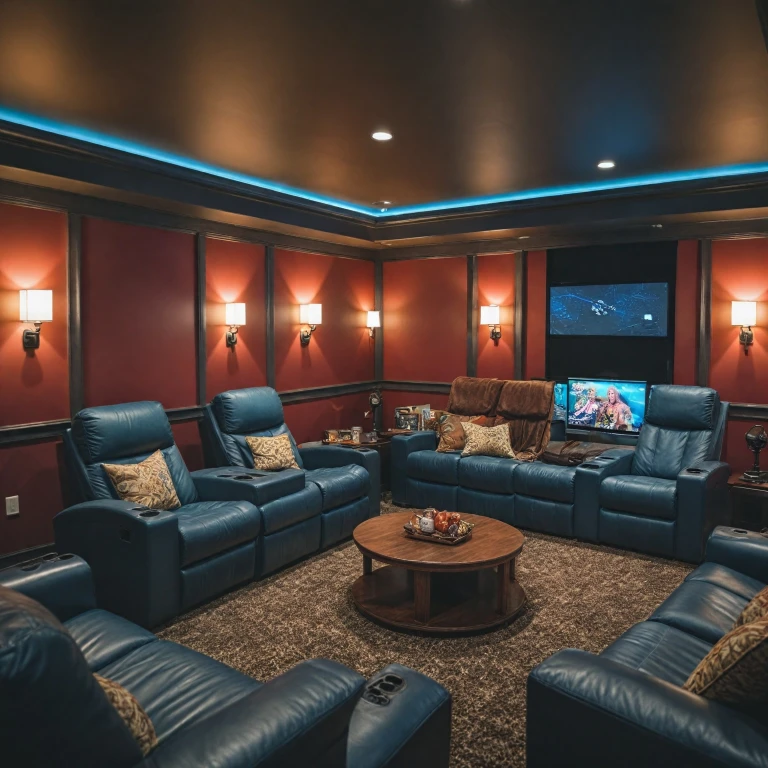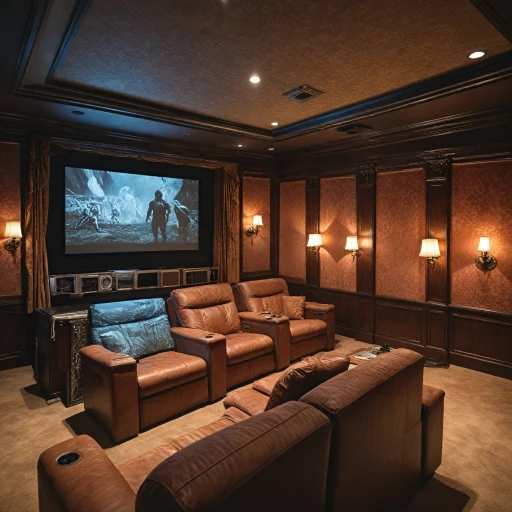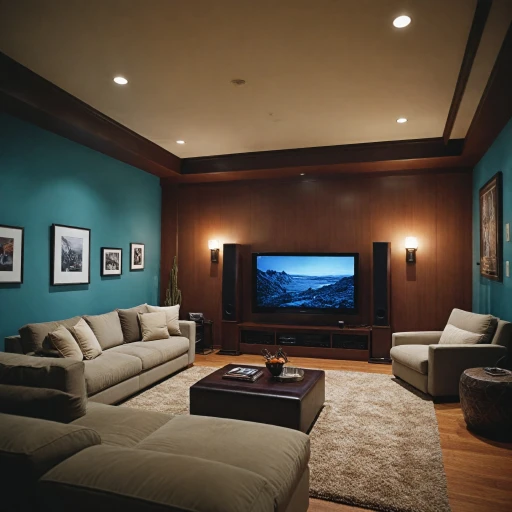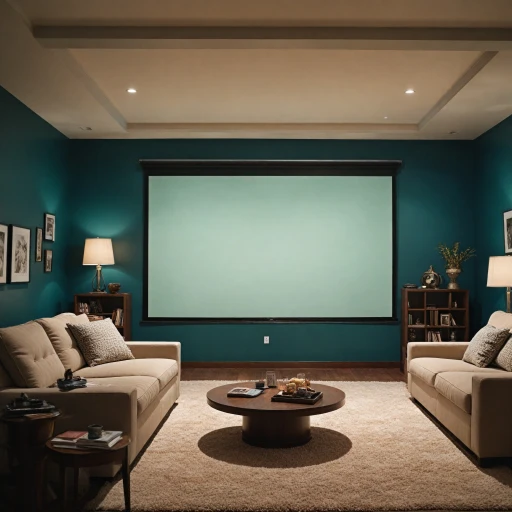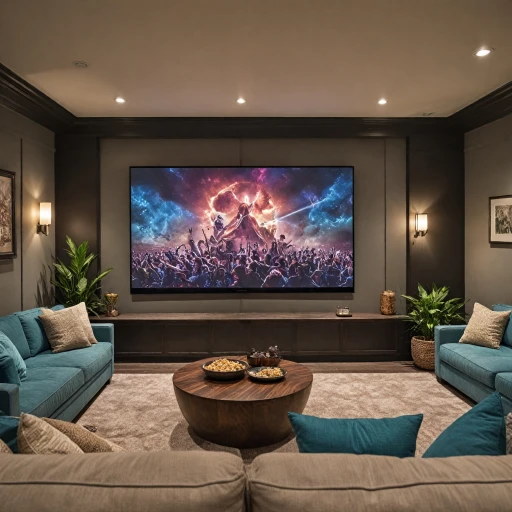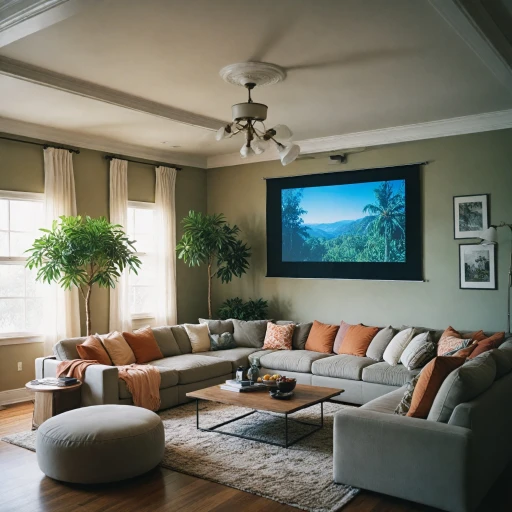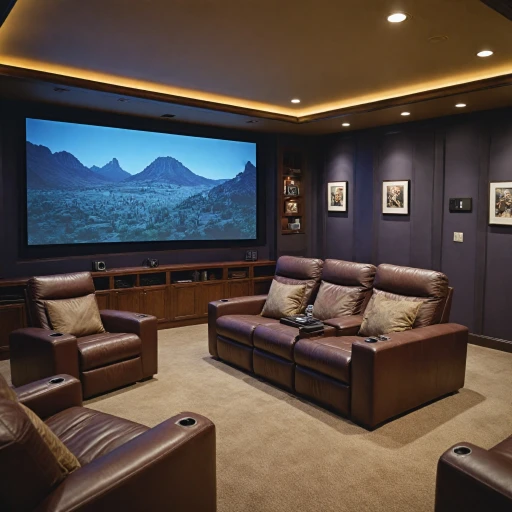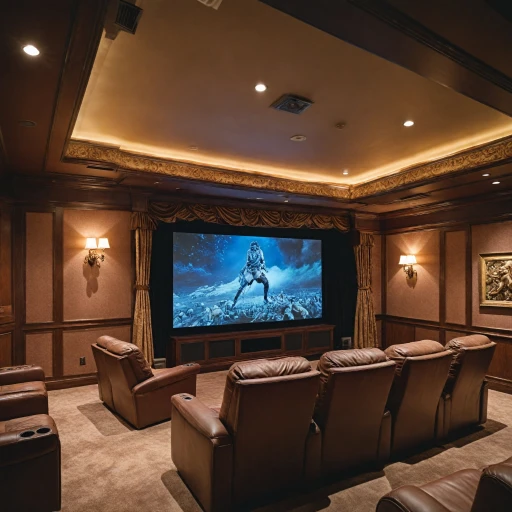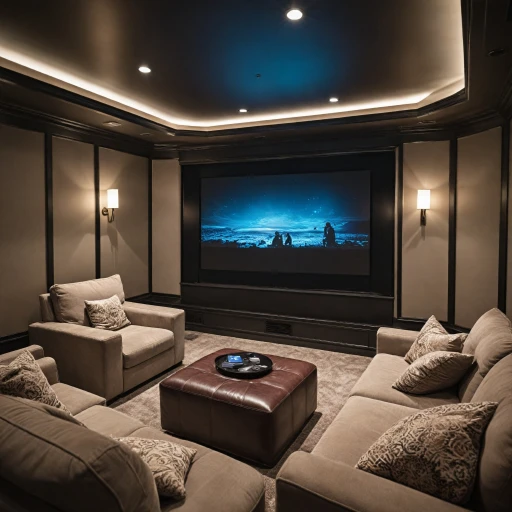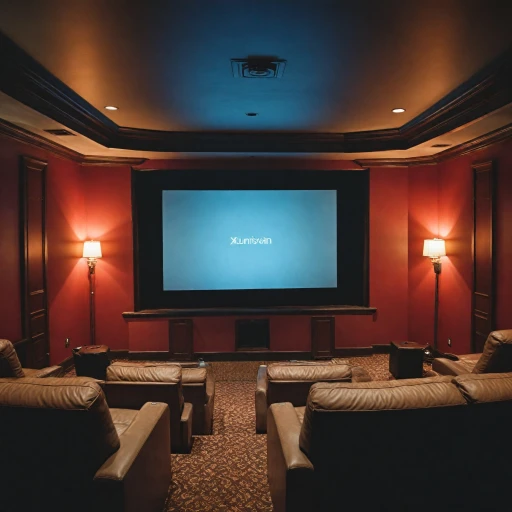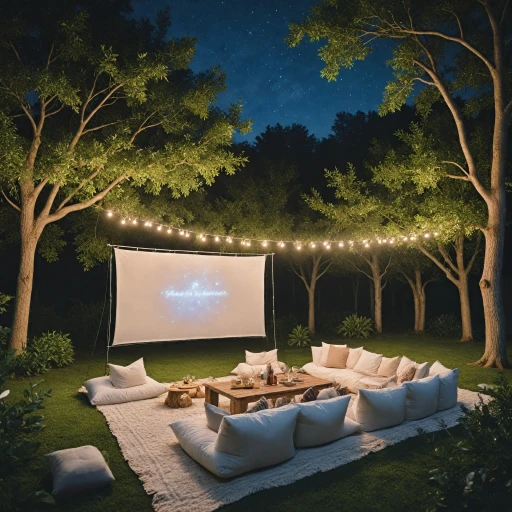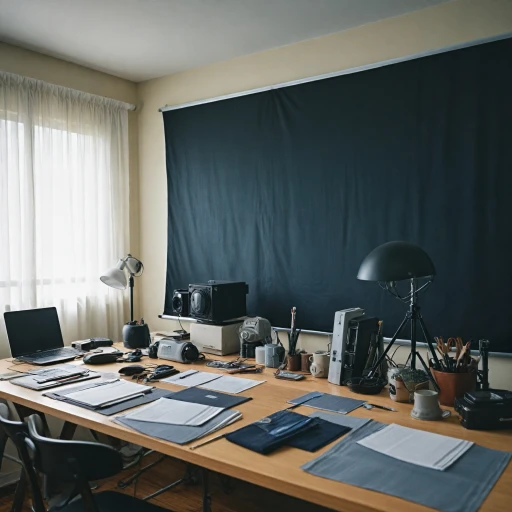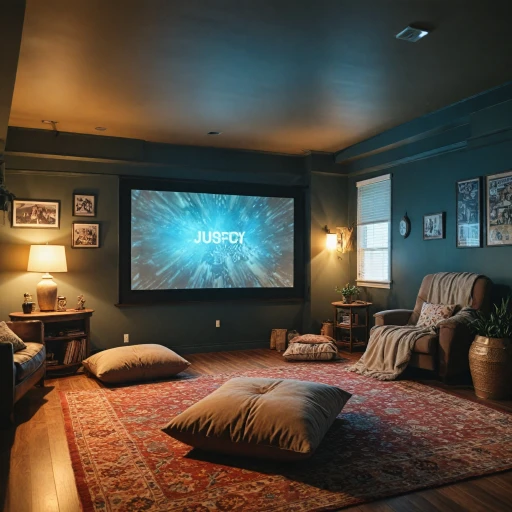
Why Screen Size Matters in Home Theaters
Importance of Screen Size in Home Theaters
Screen size is a critical element when creating the perfect home theater experience, serving as the centerpiece that dictates various other factors. Understanding why it matters can significantly enhance your enjoyment of movies, games, and multimedia.- Visual Impact: Bigger screens, like a 120-inch projection screen, provide a more immersive viewing experience. The large size fills your field of view, creating an impression similar to that of a commercial theater. A carefully chosen screen size helps in maximizing the quality and clarity of images, as it allows you to see intricate details with ease.
- Viewing Distance: The correct distance is pivotal in maintaining eye comfort while ensuring that you're enveloped in the on-screen action. The projection height and width, combined with the screen's diagonal dimensions, contribute to finding the optimal viewing distance. A well-sized screen helps balance these elements seamlessly.
- Throw Ratio Considerations: The screen's size will directly impact the choice of your projector, particularly in terms of throw ratio. For room setups that cannot accommodate long distances, a short throw or ultra short throw projector might be necessary to achieve the desired image size without sacrificing quality.
- Room Size and Layout: A 120-inch screen demands a certain amount of space; not all rooms can comfortably accommodate such dimensions while maintaining the right aspect ratio and viewing angle. Assessing the room layout ensures that the screen integrates well with your existing setup.
Decoding 120-Inch Screen Dimensions
Understanding Size and Measurements
When planning for a 120-inch projection screen, it is crucial to comprehend the detailed dimensions to ensure a seamless fit into your home theater setup. Typically, a 120-inch screen refers to the diagonal measurement, offering a cinematic experience right in your living room.
Here are some key points to consider when looking at the exact screen dimensions:
- Width and Height: The standard 16:9 aspect ratio, often preferred for home theaters, means a 120-inch screen will generally have a width of around 105 inches and a height of approximately 59 inches. Understanding these specific dimensions allows for precise planning, ensuring compatibility with your room size and layout.
- Viewing Field: The screen’s dimensions significantly impact the viewing experience. The larger surface area provides a wide visual field, facilitating an immersive theater atmosphere.
- Frame Considerations: For a fixed frame screen, the overall size might slightly increase. Account for the additional inches added by the screen frame which can affect placement and size calculations.
- Projection Set-Up: The throw ratio of your projector plays a vital role. For a perfect projection, ensure your room and projector are equipped to handle the screen's dimensions effectively without distortion or mismatch.
Considering these measurements helps maintain the optimal viewing distance and enhances the visual quality you experience. Choosing high-quality screen materials from brands like elite screens can further elevate your setup, offering a sharper, more vibrant picture.
Need help deciding on the best screen for your setup? Check out our automatic movie screen guide for more insights.
Choosing the Right Projector for a 120-Inch Screen
Selecting the Ideal Projector for a Big Screen Impact
When choosing a projector to complement your 120-inch screen, key considerations include projection technology, throw distance, and aspect ratio. As you look to enhance your home theater, understanding these elements will ensure a seamless integration between the screen and the projector.
First, determine the throw distance, which refers to the projector’s ability to cast an image over a specific range. For a 120-inch screen, a short throw projector may be needed if space is limited. The throw ratio plays a vital role here:
- A short throw projector may only need a few feet between the projector and the screen.
- With a fixed frame setup, a standard or long throw projector could offer more flexibility in placement, allowing for greater adjustment and alignment.
Another critical aspect is the aspect ratio. A 16:9 ratio is common for a cinema-like experience, offering a wider viewing angle and enhancing the viewing experience with high-definition content. Combining this with high-quality projector screens like those from elite screens can significantly improve the image clarity and brightness, optimizing the dynamic range for your chosen content.
Further, selecting the right screen material is essential for an optimal viewing experience. Various options, such as matte white or acoustically transparent screens, can impact the projection quality, either enhancing color richness or allowing for speaker placement behind the screen without sound obstruction.
Once you have determined your projector’s capabilities, proper mounting is critical for achieving an immersive experience. You can explore the best practices on mounting a projector on the ceiling to ensure your setup is both practical and aesthetically pleasing.
Optimal Viewing Distance for a 120-Inch Screen
Finding the Sweet Spot
Determining the optimal viewing distance for a 120-inch screen can significantly influence your home theater experience. The primary factor to consider is the balance between the screen size and the available space in your room. With the majestic expanse of a 120-inch screen, it's crucial to set the right distance to ensure immersive, yet comfortable viewing.
When dealing with an inch projector and projection screen dimensions like a 120-inch model, the commonly recommended viewing distance is approximately 1.5 to 2.5 times the diagonal width of the screen. This means for a screen of this size, you should maintain a distance of around 15 to 25 feet.
Accounting for Resolution and Throw Ratio
The resolution of your projector and its throw ratio should also guide how far you position the seating from the screen. For high-definition or ultra-high-definition content, closer seating might allow you to appreciate the finer details. Therefore, for high-quality projection, consider a short throw or ultra short throw projector if space is limited.
Whether your projector offers a short throw or a more standard throw ratio, ensure that the distance matches the image quality and the room’s layout. Confirm the projector's capabilities against the specifications of your chosen projection screen, which often requires a distance based on diagonal size to achieve the optimal aspect ratio and viewing angle.
Maximizing Your Viewing Experience
When you plan the layout of your theater room, ensure the screen is centered within your seating arrangement. This setup will provide every viewer with an unobstructed view, enhancing the cinematic feel. The comfort of the viewing distance aligns with the quality material and construction of modern projector screens like fixed or fixed frame screens, which provide stability and aesthetic appeal.
For ultimate comfort, remember to assess the height and width dimensions of your screen in tandem with your room's design. Eliminate potential glare or eye strain from unsuitable screen angles by adjusting your room setup accordingly.
Installation Tips for a 120-Inch Screen
Setting Up Your 120-Inch Projection Screen
When installing a 120-inch projector screen in your theater room, it's crucial to carefully consider the placement and setup to ensure an optimal viewing experience. Here are a few key aspects to keep in mind:- Positioning the Screen: The screen size and height placement significantly impact the viewing experience. The screen should ideally be mounted or placed at eye level, allowing viewers to engage comfortably without having to strain their necks. Ensure the bottom edge of the screen is around 24-36 inches from the floor for most seating arrangements.
- Securing the Frame: Whether you're using a fixed frame or a retractable setup, ensure the screen is securely attached to prevent any warping or sagging. Opt for a sturdy mounting system that supports the screen's weight and dimensions effectively.
- Choosing the Right Screen Material: The choice of screen material directly affects the quality of the projected image. Consider materials that offer high color accuracy and contrast, such as those provided by reputed brands like Elite Screens. A matte white screen material can enhance image clarity in a controlled lighting room.
- Accommodating the Projector's Throw Ratio: Measure the throw distance accurately. Most inch projectors will have a specific throw ratio that determines how far they need to be from the screen to display an image at the correct size. Short throw and ultra short throw projectors require less distance and can be a great fit for small rooms.
- Understanding Aspect Ratio: A 120-inch screen often supports multiple aspect ratios. Ensure the screen dimensions align with the aspect ratio of your viewing content—whether it's 16:9, 4:3, or any other format—to eliminate black bars around the image.
Enhancing Your Home Theater Experience
Transforming Your Viewing Experience
Elevating your home theater experience goes beyond choosing the right screen size or optimal distance; it encompasses the entire setup, including the quality of your projection screen and projector. For those dedicated to making the most of their 120-inch screen, consider these enhancements:- Screen Material: The material dictates the quality of your image. Opt for premium fixed frame projector screens that offer an ideal viewing angle and maintain the viewer’s focus on the screen. Elite screen products are recommended for their uniform screen surface and durability.
- Lighting Control: Ensure your room is dimly lit to enhance the contrast and brightness of the projected image. Blackout curtains or controlled lighting can significantly affect the outcome.
- Acoustics and Sound: Complement your visual experience with excellent sound. Acoustic panels and a high-quality sound system tailored for the room size will balance the audio to avoid overwhelming echoes.
- Ergonomic Seating Arrangement: The furniture arrangement should complement the screen dimensions, ensuring everyone has an ideal line of sight without neck strain. Recliners or comfortable couches offer a luxury feel.
- Technology Integration: Invest in smart home technology that allows you to control your theater setup with ease, from adjusting the projector throw ratio to setting the room’s ambience with the touch of a button.
